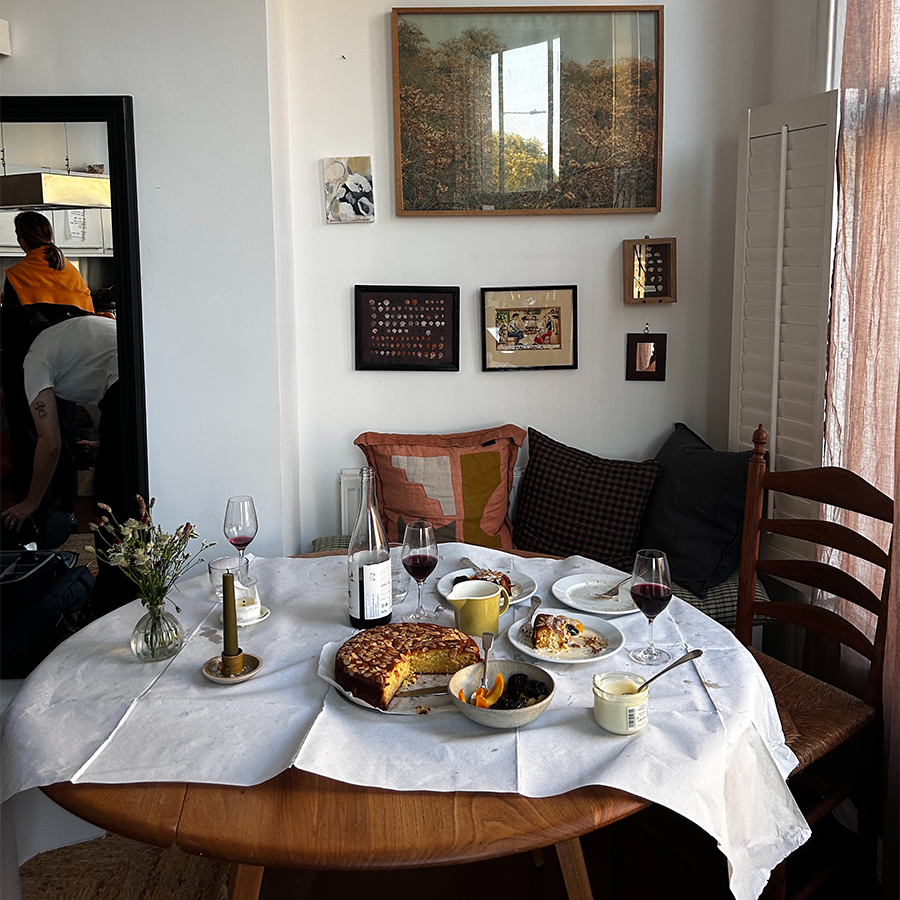When it comes to styling and serving, I like to stick to the classics …
We talk endlessly about food – how to cook it, where to eat it, what’s in season. But what about the thing it actually lands on? Plates matter. Sometimes, I’d argue, almost as much as the food itself.
I have a weird thing about plates. It’s one of the few areas of my life where I find myself being quite judgemental. Square plates? Straight in the bin. Black plates? Even worse. Those speckled ceramics you dragged back from Puglia? Sorry, no. And that broken, chipped French floral number you’re clinging onto for its shabby chic charm? Hang it on the wall if you must, but please don’t put food on it.
I find myself walking into restaurants and instantly clocking the plates. Because no matter how delicious the food is, if it’s served on a black slate or piled in the centre of a giant 26cm aqua blue plate, I won’t like it. Don’t get me started on chips in a miniature wheelbarrow …
I grew up surrounded by big stacks of white catering plates, that went through the dishwasher hundreds of times a day and still somehow looked crisp. At home in Mallorca, we had white hotel cast-offs with the perfect coloured rim, pottery from the market with a subtle, uneven glaze, and big oval vintage platters for serving.
I’m a prop stylist as well as a food stylist. Choosing plates, bowls, glassware, and tablecloths is literally my job.
I spend hours wandering through prop warehouses in London (and a smaller, charmingly chaotic one in Dublin), where every colour, texture and shape of tableware is stacked from floor to ceiling. Shelves of chopping boards so high you need a ladder. Walls of drawers for cutlery, rolling pins and tongs. Corridors of coloured glassware. It’s heaven if you love objects, hell if you’re indecisive.
My role is to pick what’s on trend, or what fits a specific brief. Sometimes the mood is rustic and Mediterranean, sometimes sleek and modern. But more often than not, the answer is simple white plates, so the food can speak for itself.
If you scroll through your saved recipes on Instagram, I’d bet good money that 99 per cent of the dishes are plated on plain white. White looked chic in the 1930s, and it still looks chic now. It lets the food be the star. No patterns, no scalloped edges, no distractions.
With the exception of the plates you inherited from your grandparents or those you received as a wedding gift – I don’t want to make enemies via crockery here.
Because here’s the truth: the plate changes how food is perceived. Serve spaghetti alle vongole on a shiny black square and it looks like conference buffet food. Put the same dish in a plain white shallow bowl and suddenly it’s chic, restaurant-worthy, appetising.
On my own shelves, I have stacks of plates and bowls and white platters which to you might look the same. But I love them all. Each has its own function, depending on what I’m cooking. I love the moment when everything is nearly ready to serve and I can stand back, look at my shelves, and decide which ones to reach for.
I’ll happily admit it: I’m fussy about plates. But only because I know how much they matter. The wrong plate can make great food look tragic, the right plate can make Tuesday-night beans feel like dinner at a trattoria. Retire the black squares, bin the blue plates and let’s stick to the simple, classic look. @kittycoles
We may earn a commission if you buy through affiliate links on our site.





